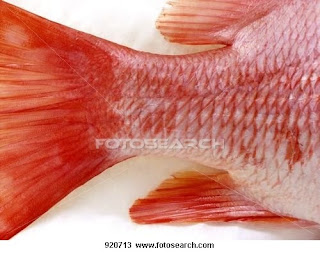I was gone 3 days, 2 days on the road, 450 RT miles of road construction, devastated countryside, highways, interstate traffic, road repair, subdivisions, McMansions crowded like peas in a pod.
Florida was a beautiful state once and I suppose it still is, in places, for those who fly in and stay on a beach but I, and thousands of others, who live in the interior, have to fight one another’s cars for access to our waters and legendary sunsets, for the sight of Brown Pelicans (Pelecanus occidentalis)
the Red Snapper (Lutjanus campechanu)
and Great Barracuda (Sphyraena barracuda)
. The roads I traveled were thick with cars driven by some who live here, some who merely visit, and those, like me, who realize what we are seeing as we rush up and down the state isn’t what we came for. It’s not the Florida that’s advertised and it’s not the Florida that used to be, most assuredly not the one where my grandparents wintered on Marco Island in a little fishing cabin lit by oil lamps.
Driving U. S. 1 toward the "Space Coast," I passed through many small communities decorating each end of their city limits with imported palms: Are they importing the Everglades and Florida Silver Palms, the Florida Royal, the Washington Palm, bringing the "Florida look" of advertising north? Every time I observe this replacement of natural landscape with palms, I wonder who has connections at the road department. Palms have, I suppose, become synonymous with “Florida,” but, honestly, we do have other trees.
Mostly, I saw cars, traffic lanes, food franchises, and gas stations, but I did twice pass over the vast blue of the St. Johns River; and, oh! how I'd like to travel its length with Bill Belleville, author of RIVER of LAKES: A Journey on Florida's St. Johns River. I also drove twice through the
potato fields of Bunnell where, on either side, rows of green plants alternate with rows of black soil, one site on this route that’s stayed the same over my lifetime. Someday, I’ll drive Hwy 100 and see condos in those potato fields; maybe actors decked out as Timucuans, paddling their dugout canoes in the St. Johns, posing for tourist photos.
I made this trip—averaging 30 mph on the way down to Brevard County—to see a convalescing friend, my father-in-law, Lee Covell, who came with Northrop to FL from California for the Snark Program of the 1950s at (what was then known as) Cape Canaveral. When Covell helped build John Glynn’s capsule for the first manned flight, he and his coworkers made history. I briefly worked in the space program myself, long ago during its early, glorious first days. I watched Neil Armstrong blast off on his trip to the moon and in 1967 I stood, transfixed, in my infant son’s room, hearing on the radio that astronauts Grissom, White, and Chaffee had just died in a fire on the launching pad.
It happened that during this recent visit I was in Brevard on the 25th anniversary of the Challenger disaster, that day in 1986 when, on the TV screen, a space capsule in a smoky sky broke in half. This week, in between news reports of street demonstrations in Tunisia and Cairo, commentators repeated the names of those who died in the Challenger; again and again, I heard Ronald Reagan say of the astronauts that they had “slipped the surly bonds of earth to touch the face of God.”
Covell is still verbally quick and humorous, but he’s fighting for what’s left of his health and independence; shuttled to appointments on weekdays, he falls asleep with his head on the dining table, suddenly, in the middle of a sentence. For his country, he fought in the Pacific during World War II, and considers himself lucky to have been hit by a grenade, awakened on a hill some distance away, and sent home, alive. I wonder what he would make of world events now--the riots in Cairo today, the tank that swung into view on the TV screen as I ate my restaurant breakfast.
I am overwhelmed by the sense that history's tides routinely sweep me onto a beach, pull away, then lift and drop me again. Lee Covell’s memories of Titusville, Cocoa Beach, and Melbourne in the early 1950s are even older than mine. He was there when beachfront went for $35 an acre, before the Indian and Banana River bridges were cluttered with traffic and motels mounted fake satellites on their roofs, when the Apollo 12 astronauts drove Corvettes, and Covell’s grandson was allowed to order speared hummingbirds at Bernard’s Surf.
I was young once and so was my father-in-law; in fact, I realize now that he was still young when I thought him old, when we first met in 1961. The old could tell the young how beautifully the land once lay before us, the rattle of palms in the wind and the plop of large fish off starboard. Though I saw no ocean and very little natural landscape, as I drove I did look up as much as I could into the swath of blue above the road and on both sides saw the silver tops of bare trees interspersed with red samara, the winged seedpod of the Red Maple.
Those scarlet flags were everywhere I went, silver, red, and blue, above and on either side of me, up I-95 and inland on 100, all the way home. Over all those cell phones, the torturous traffic, airplanes, construction equipment, and moldy roadside motels, I am firmly imposing the memory of those maples flashing their red tops against a pure blue sky.
Tuesday, February 1, 2011
Subscribe to:
Post Comments (Atom)





No comments:
Post a Comment